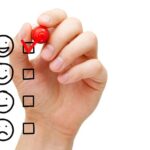A well-crafted event brief is the cornerstone of any successful event. It serves as a guiding document that brings teams together, establishes clear objectives, and streamlines planning from start to finish. Whether you’re organizing a conference, fundraising gala, or community event, a solid brief ensures everyone is aligned on the goals, audience, and resources required to execute an impactful experience.
This guide will take you through each step of building an event brief that sets a strong foundation, from clarifying the purpose and defining objectives to managing key details and roles. By the end, you’ll be equipped to create a comprehensive event brief that makes the planning process smooth, efficient, and goal-driven.
Want to skip to the template? Get the template here!
Define the Event Purpose and Objectives
The first step in building an event brief is defining a clear purpose and specific objectives for the event. Start by considering the bigger picture—why is this event being held? Is it to engage a community, raise funds, drive awareness, or facilitate networking?
Articulating a strong purpose not only provides direction but also unifies everyone involved around a shared vision.
Tips for Setting Event Objectives
- Make Objectives Measurable: Set clear, measurable goals that can be tracked. For instance, instead of a general aim to “increase engagement,” specify a target, such as “increase attendee engagement by 20% over last year’s event.”
- Align Objectives with Broader Goals: Ensure that the event objectives support larger organizational goals, whether it’s brand visibility, supporter engagement, or community education. This alignment helps demonstrate the event’s strategic value.
- Establish KPIs and Expected Outcomes: Define key performance indicators (KPIs) that reflect the event’s success. Examples might include registration numbers, attendee satisfaction, funds raised, or social media impressions. Having clear KPIs gives your team a concrete benchmark for assessing the event’s impact.
By defining a strong purpose and setting precise objectives, your event brief will offer a focused roadmap, ensuring that every decision made—from planning to execution—contributes to achieving these foundational goals.
Identify Your Target Audience
Understanding who your event is for is essential for crafting an experience that resonates and achieves its purpose.
Defining your target audience ensures that all aspects of your event—from programming to promotion—are tailored to meet the expectations, preferences, and needs of your intended participants.
Steps for Defining Your Target Audience
1. Start with Demographics
Begin by outlining the basic demographic details of your ideal attendees. Consider factors like age, profession, location, and industry relevance. For instance, if your event is designed to appeal to professionals in a specific field, defining these characteristics helps you focus content, speakers, and networking opportunities to match their interests.
2. Explore Psychographics
Go beyond demographics and consider the psychographic profile of your audience. Think about their values, interests, and behaviors. Are they looking for networking opportunities, educational content, or professional development? Understanding these motivations allows you to shape the event in a way that provides genuine value.
3. Identify Pain Points and Needs
Consider the specific challenges or needs of your audience. For example, are they seeking new insights into their field, looking to connect with peers, or needing inspiration? Tailoring your content to address these pain points creates a more engaging and meaningful experience for attendees.
Tailoring Messaging and Content
Once you’ve defined your audience, make sure your messaging and content choices reflect their preferences and expectations:
- Create Targeted Messaging: Use language and visuals that resonate with your audience’s interests and professional identity. For example, if your audience includes high-level professionals, focus on sophisticated messaging that highlights the event’s value and exclusivity.
- Plan Relevant Activities: Design your agenda and event components to appeal to the audience’s preferences. Whether it’s breakout sessions, networking lounges, or hands-on workshops, structure your program so that it aligns with what attendees value most.
Defining your target audience and tailoring your event to meet their needs will not only boost attendance but also foster a more engaged and satisfied crowd. This understanding forms the foundation for every decision made, ensuring that your event delivers a compelling and impactful experience for all attendees.
Outline the Event Format and Key Details
With the purpose and audience defined, the next step in creating an effective event brief is to outline the event’s format and essential logistical details.
These decisions will shape the overall experience and should reflect the event’s goals and target audience preferences, whether the event is a one-day conference, multi-day summit, or virtual roundtable.
Defining Your Event Format and Structure
- Choose the Event Format: Decide whether the event will be in-person, virtual, or a hybrid of both. The format should be chosen based on what will best serve your objectives and audience. For instance, a hybrid format may be beneficial if you want to reach both a local and remote audience, whereas an in-person event might be ideal for fostering stronger networking and connections.
- Establish Date, Time, and Duration: Select a date and time that align with the audience’s availability and other key factors like holidays or competing industry events. Consider the ideal duration, aiming to keep sessions focused and engaging to avoid fatigue. For virtual events, shorter sessions or built-in breaks can enhance participant engagement.
- Identify Venue or Platform Needs: If in-person, choose a venue that accommodates the expected attendee numbers, program agenda, and any special requirements (e.g., accessibility, breakout rooms). For virtual events, select a platform that supports your format—consider features like live chat, breakout rooms, screen-sharing, or Q&A options to maintain engagement.
Aligning Logistics with Event Goals
Each detail should reinforce the goals and enhance the experience:
- Technology Requirements: Assess the necessary tech support, such as audiovisual equipment, internet connectivity, and streaming capabilities for virtual or hybrid events. Ensuring robust technology can help create a seamless experience, especially for attendees engaging remotely.
- Amenities and Services: Consider additional amenities like catering, accessibility accommodations, or special services that will elevate the attendee experience. For instance, branded swag, networking lounges, or a well-planned registration process can make a strong impression.
Ensure Flexibility in Planning
Stuff happens and the unforeseen can throw a wrench in your event plans. So, given the dynamic nature of events, allow room for flexibility:
- Prepare Contingency Plans: Whether it’s a backup venue, an alternate streaming platform, or extra tech support, planning for unexpected changes helps safeguard the event experience.
- Stay Aligned with Audience Expectations: Flexibility also means being attuned to attendee feedback and adapting elements as needed, such as session length or networking time.
Outlining these foundational details early on enables your event to run smoothly and sets clear expectations for both planners and attendees.
By aligning the logistics with your objectives, the event format and key details come together to create a seamless, goal-focused experience.
Develop a Comprehensive Budget
A clear, realistic budget is essential for the successful execution of any event. Not only does it provide a financial roadmap, but it also helps prioritize resources and allocate funds to areas that will maximize impact.
A well-planned budget is an invaluable tool for keeping costs in check and ensuring that every dollar spent supports the event’s objectives.
- List All Possible Expenses: Start by identifying all potential expenses. Common categories include venue rental, technology (e.g., audiovisual, virtual platforms), marketing and promotion, catering, décor, staffing, and travel costs. Break these into line items to ensure that nothing is overlooked.
- Allocate Funds to Prioritize Impact: Once expenses are identified, allocate funds strategically. For example, if attendee engagement is a top priority, you may want to invest more in programming, interactive sessions, or speaker fees. Conversely, if your focus is on maximizing reach, allocate more to marketing and promotion.
- Plan for Contingencies: Events often come with unforeseen costs, whether due to last-minute changes or unexpected logistical needs. Set aside a contingency fund—typically 10-20% of your budget—to cover unexpected expenses without disrupting other allocations.
Tips for Managing Costs and Staying Within Budget
- Negotiate with Vendors: Explore opportunities to negotiate rates with vendors and partners, especially for bulk services like catering or technology rentals. Many vendors offer discounts for nonprofits or organizations with frequent events, so it’s worth asking.
- Prioritize Quality Over Quantity: When budgeting, prioritize quality items or services over simply covering all possible options. A smaller but high-quality event often leaves a more lasting impact than a larger one with diluted quality.
- Track Spending Closely: Set up a system to track spending in real-time to ensure you’re staying within budget. Use a spreadsheet or budgeting software to record every expense and compare it to the budgeted amount for each category. This ongoing tracking helps identify potential overages early on, allowing for timely adjustments.
Balancing Cost Efficiency and Attendee Experience
Creating a budget that balances cost-efficiency and a positive attendee experience is crucial:
- Focus on Attendee Value: Allocate funds in a way that enhances attendee satisfaction, whether through engaging content, a well-designed venue, or user-friendly virtual platforms. Investing in areas that directly impact the attendee experience will create a more memorable event.
- Consider Sponsorship Opportunities: If budget constraints are a concern, explore sponsorship options. Partnerships with companies or organizations can provide additional funding or in-kind contributions like promotional materials, equipment, or even event space.
By developing a comprehensive budget, you set financial boundaries that keep the event planning process focused and grounded. A thoughtfully planned budget not only prevents overspending but also enables you to create a high-quality event that delivers on its objectives without compromising the attendee experience.
Define the Event Program and Agenda
A well-structured event program and agenda are vital for keeping attendees engaged and ensuring that each session or activity contributes to the overall objectives.
By carefully planning the event flow, you create a seamless and enjoyable experience that aligns with your goals, whether it’s fostering connections, sharing insights, or inspiring action.
Steps to Building an Effective Event Agenda
- Start with a High-Level Structure: Begin by defining the main components of the event—keynotes, breakout sessions, panel discussions, networking times, and closing remarks. Decide the best order and structure to keep attendees engaged and the program flowing smoothly.
- Plan Each Session with Purpose: Each agenda item should have a clear purpose that aligns with the event objectives. For example, if one goal is knowledge-sharing, include expert-led workshops or presentations that provide actionable insights. For networking-focused events, allocate sufficient time and space for attendees to interact in informal settings.
- Balance Content and Breaks: Attendee attention is limited, so it’s important to balance information-heavy sessions with breaks and interactive activities. For longer events, consider including scheduled breaks and lunch sessions. This not only helps with focus but also creates natural opportunities for networking and conversation.
Designing Engaging Session Formats
To create a memorable experience, experiment with session formats that encourage interaction:
- Incorporate Interactive Elements: Panel discussions, Q&As, and breakout groups can be more engaging than traditional lectures. Interactive formats encourage attendees to actively participate and connect with the content on a deeper level.
- Plan for Diverse Content Styles: Include a mix of content types to cater to varied attendee preferences. For example, combine keynote speeches with smaller workshops or discussion groups for a more dynamic experience.
Developing a Detailed Agenda for Attendees
The event agenda should be clear, easy to follow, and accessible to attendees:
- Provide Clear Timing and Descriptions: Include start and end times for each session along with concise descriptions. Attendees should understand what each session entails and how it contributes to the event’s overall value.
- Build in Flexibility: Allow some flexibility in the schedule for sessions that may run longer than expected or for unplanned adjustments. A small buffer between sessions can be helpful to keep the program running smoothly.
Ensuring Alignment with Event Goals
To maximize the effectiveness of the program, ensure that each session supports the broader goals of the event:
- Focus on Value-Driven Content: Curate content that directly aligns with attendee needs and event objectives. This ensures that each session feels purposeful and provides clear takeaways.
- Connect Content to Broader Organizational Goals: Whenever possible, tie the program back to larger organizational objectives. For example, if one goal is to increase community awareness, schedule sessions or announcements that emphasize your organization’s mission, impact, or future initiatives.
A well-planned program and agenda provide attendees with a structured and engaging experience, ensuring they leave with valuable insights, new connections, and a positive impression of the event.
With a purposeful agenda, you lay the foundation for an event that not only meets logistical needs but also drives meaningful engagement and fulfills your objectives.
Assign Roles and Responsibilities
A successful event relies on a coordinated team where each member understands their specific responsibilities and how they contribute to the overall goal.
By assigning clear roles early in the planning process, you foster accountability, streamline decision-making, and ensure that each element of the event is executed efficiently.
Roles to Outline in Your Agenda
- Event Manager or Coordinator: This person oversees the entire event, ensuring that all elements come together cohesively. They manage timelines, coordinate between departments, and address any high-level issues. The event manager often serves as the primary point of contact for both the team and any external partners.
- Event Marketing and Promotion Lead: Responsible for developing and executing the marketing strategy, the marketing lead handles promotion across channels such as social media, email, and partnerships. They ensure that messaging aligns with the event goals and that promotions reach the target audience effectively.
- Logistics and Operations Coordinator: This role covers the logistical details—venue setup, technology requirements, registration, and guest services. They handle all on-site or virtual needs, working closely with the event manager to ensure smooth operations.
- Content and Program Coordinator: This team member is responsible for shaping the event’s content, from speaker outreach to scheduling and session structure. They coordinate with speakers, handle agenda details, and make sure each session aligns with the event objectives.
- Sponsorship and Partnership Manager: If your event involves sponsors or partners, assign someone to manage these relationships. This person ensures that sponsor needs are met, handles partnership deliverables, and identifies opportunities for mutually beneficial collaboration.
Assigning Responsibilities
Clarifying responsibilities early ensures a smooth planning process. Assign ownership for each key task to specific individuals—for example, designating social media, email campaigns, and press outreach within marketing.
Establish a reporting structure so each role knows where to direct updates and questions. This structure streamlines decision-making, encourages accountability, and keeps the team aligned on goals.
Encourage Collaboration and Communication
Regular check-ins keep everyone aligned and allow for real-time adjustments. Weekly or biweekly meetings provide updates and problem-solving opportunities, while tools like Trello or Slack centralize tasks and communication.
Using a shared platform reduces miscommunication and enables each team member to track progress, fostering a collaborative approach that drives a successful event.
Document Your Promotion and Marketing Strategy
Incorporating a promotion and marketing strategy into your event brief ensures that the event’s goals are fully supported by targeted outreach, from initial announcements to post-event engagement. Outlining this strategy within the brief provides a roadmap that guides your team, helping them execute a cohesive campaign that drives attendance and engagement.
Key Components of the Marketing Section in Your Event Brief
Marketing and promotions are essential to pulling off a successful event. Be sure to include in your brief the plan to actually get people to attend your event. Here are some essential marketing components to outline in your event brief:
Key Promotion Channels: Identify and document the primary channels for reaching your target audience in the brief, such as social media, email, website announcements, or industry partnerships. Specify how each channel aligns with your audience’s preferences to streamline the promotional efforts and maximize impact.
Establish a Promotion Timeline: Outline a promotion timeline within the brief, detailing specific milestones like “Save the Date” announcements, registration deadlines, and reminders. Include checkpoints for building interest, from initial teasers to last-minute engagement tactics. Having a structured timeline in the brief allows all team members to stay synchronized and ensures consistent outreach leading up to the event.
Create Targeted Messaging and Visuals: Capture core messaging and branding guidelines within the event brief to maintain a consistent tone and appeal. Specify the key message points that highlight the event’s value for your audience and guide the creation of visuals or CTAs that reflect the event’s theme. Including these details ensures that all promotional content aligns with the event’s goals and resonates with potential attendees.
Leveraging Partnerships and Sponsorships in Your Event Brief
Collaboration with partners or sponsors can amplify reach and credibility, and documenting these roles in the brief helps formalize expectations:
- List Partnership and Sponsor Roles: Include a section for key partners or sponsors, outlining any commitments they’ve made for cross-promotion. This might include joint emails, social media shout-outs, or placement in promotional materials, with clear timelines and deliverables.
- Set Visibility Guidelines: Define how sponsors or partners will be highlighted in the event’s promotion. Include specifics, such as logo placement, mentions in press releases, or features in social media posts, to ensure consistent recognition throughout the campaign.
Tracking and Optimization Plans
To ensure effective promotion, include a tracking and adjustment plan within the brief:
- Define Metrics for Success: Specify key metrics like registration conversions, engagement rates, and website traffic in the brief. This allows your team to monitor success and adapt strategies as needed to stay aligned with event goals.
- Outline a Feedback Process: Plan for post-event feedback to assess the effectiveness of the promotional strategy. Including this in the event brief ensures that data from this event can inform and improve future marketing efforts.
By integrating a promotion and marketing strategy into your event brief, you provide a structured framework for reaching the right audience and driving attendance. A detailed, documented strategy aligns your team’s efforts and maintains focus on the event’s objectives, allowing for a well-coordinated and impactful campaign.
Set Up an Event Evaluation Plan
An event evaluation plan is an essential part of any event brief, providing a structured way to assess success and identify areas for improvement. By including clear evaluation metrics and methods in your brief, you equip your team with the tools to measure outcomes and gather feedback that can shape future events.
Define Success Metrics
Outline specific metrics within the brief that align with your event’s objectives. Common metrics include registration and attendance numbers, engagement rates (such as session participation or live chat activity), social media interactions, and post-event survey responses. Setting measurable goals for each metric in advance enables a clear assessment of the event’s impact.
Plan Attendee Feedback Collection
Attendee feedback is crucial for understanding what worked well and where improvements are needed. Include a plan in the brief for gathering feedback through surveys, polls, or one-on-one interviews. Specify the timing (e.g., immediately post-event or one week after), format, and key questions to be asked. Sample questions might cover session satisfaction, perceived value, and any unmet expectations, providing direct insights into the attendee experience.
Assess Content and Speaker Impact
Outline methods to evaluate the effectiveness of the event’s content and speakers. This can be done through feedback forms after each session or ratings in the post-event survey. If possible, use qualitative feedback to gauge the relevance and impact of specific sessions, identifying content that resonates most with attendees.
Using Evaluation Data for Future Planning
An essential component of the evaluation plan in your event brief is outlining how the collected data will inform future events. Plan to compile all metrics, feedback, and qualitative observations into a post-event report that summarizes the event’s overall performance against the initial objectives.
This report serves as a valuable reference for future planning and provides transparency to key stakeholders, allowing them to see how the event measured up to its goals.
Within the brief, highlight areas where data will drive future improvements, whether that involves refining promotional strategies, adjusting session formats, or enhancing the attendee experience. Setting a clear path for using insights gained from evaluation fosters a cycle of continuous improvement, helping future events build on past successes and addressing any gaps that may arise.
Including a Post-Event Debrief
A post-event debrief with the planning team is an invaluable part of evaluating the event as a whole. Scheduling a debrief meeting shortly after the event allows the team to discuss overall impressions, celebrate successes, and reflect on any challenges.
This discussion captures observations that might not be immediately evident in metrics alone, adding a layer of qualitative feedback to the assessment. Documenting key takeaways from the debrief is crucial; a simple framework noting what went well, what didn’t, and actionable steps for the future makes it easy to apply these insights to subsequent events.
This consistent approach to debriefing creates a foundation for growth, enabling your team to build upon strengths and make meaningful adjustments over time.
Example Event Brief Template
1. Event Purpose and Objectives
- Event Purpose:
(Briefly explain why this event is being held and its overarching goals) - Objectives:
- Objective 1: (e.g., Increase attendee engagement by X%)
- Objective 2: (e.g., Raise awareness about a specific initiative)
- Objective 3: (e.g., Generate new leads or sign-ups)
2. Target Audience
- Demographics: (e.g., age, profession, location)
- Psychographics: (e.g., interests, values, behaviors)
- Key Needs or Challenges: (Identify specific needs or pain points that the event will address)
3. Event Format and Key Details
- Event Type: (In-person, virtual, hybrid)
- Date and Time:
- Venue or Platform:
- Expected Attendance:
- Special Requirements: (e.g., accessibility, technical needs)
4. Budget
- Overall Budget:
- Main Expense Categories:
- Venue/Platform:
- Marketing/Promotion:
- Technology/Equipment:
- Catering (if applicable):
- Staffing:
- Miscellaneous/Contingency:
5. Program and Agenda
- Event Flow Overview:
- Opening Session: (Time, Purpose, Speakers)
- Breakout Sessions: (Times, Topics)
- Networking Opportunities: (Times, Locations if in-person)
- Closing Remarks:
- Session Descriptions: (Provide brief details about each session and its goal)
6. Roles and Responsibilities
- Event Manager: (Name, Contact Information)
- Marketing Lead:
- Logistics Coordinator:
- Content/Program Coordinator:
- Sponsorship/Partnership Manager:
- On-the-Day Support Roles: (e.g., registration, tech support)
7. Promotion and Marketing Strategy
- Key Channels: (e.g., social media, email marketing, partnerships)
- Promotion Timeline:
- Save the Date Announcement: (Date)
- Registration Opens: (Date)
- Final Reminder Campaign: (Date)
- Core Messaging and Visuals: (Main message points and branding notes)
- Partner/Sponsor Contributions: (Roles and visibility for any partners or sponsors)
8. Evaluation Plan
- Success Metrics:
- Registration numbers:
- Engagement rates:
- Post-event survey responses:
- Attendee Feedback Collection: (Survey timing, key questions)
- Post-Event Debrief:
- Scheduled Debrief Meeting Date:
- Main Points to Discuss: (Successes, challenges, areas for improvement)
- Future Planning Use: (How evaluation data will be documented and applied)
Ready to Build Your Event Brief?
Creating an event brief is more than just a checklist; it’s a strategic tool that sets a strong foundation for every aspect of planning, from defining objectives and understanding your audience to organizing logistics and evaluating success.
A well-structured brief not only simplifies the planning process but also maximizes the impact of your event, ensuring that each decision contributes to a memorable and meaningful experience. As you refine and update your brief, you’re not only setting up the current event for success but also building a valuable resource that enhances the planning of future events.
Want Easier Event Management?
Are you looking for ways to make events even easier to manage and more impactful for your members? MemberClicks offers an all-in-one solution designed to streamline every aspect of event planning, from registration and promotion to attendee engagement and post-event follow-up.
With tools built specifically to meet the needs of associations and nonprofits, MemberClicks empowers you to create seamless, engaging events that leave a lasting impression without the logistical headaches.
Schedule a personalized demo today to see how MemberClicks can simplify your event management and take your member experiences to the next level.
















